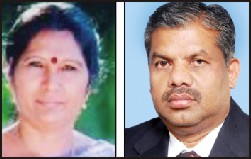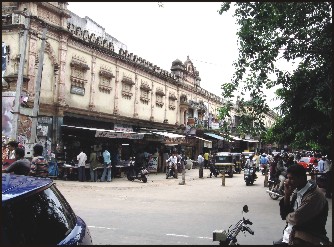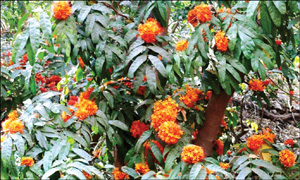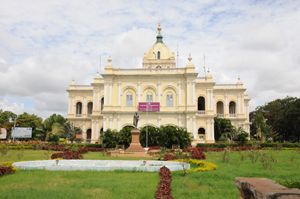Traffic can be a nightmare at peak hours. Many roads are pot-holed. Experts warn of an inevitable water crisis. But still companies and people are moving to Bengaluru like never before. Some estimate that an investment of over $1 billion has been proposed in the past 18 months.
The availability of a young, technologically skilled population is driving not just many of the world’s biggest brands but many of India’s tech-based startups to move or expand into Bengaluru. The trend is accelerating as the world gets redefined by new technological phenomena such as smartphones, social media, artificial intelligence, et al.
Bengaluru accounts for more than a third of the over 1,000 global inhouse centres (GICs) – facilities that combine technology development with back-office functions – of MNCs in India. But the spate of new announcements of GICs over the past 18 months suggests a fresh urgency. Some of the proposed investments are massive.
US oil and gas major Exxon Mobil, one of the world’s biggest companies, is making a $400-500 million (Rs 2,500 crore-Rs 3,150 crore) investment in Bengaluru to establish a technical and business support services centre. Derivatives marketplace CME Group, which handles 3 billion contracts worth approximately $1 quadrillion (that’s 1 followed by 15 zeros) annually, is said to be setting up a GIC in Bengaluru.
JCPenny, the leading American apparel and home furnishing retailer, L Brands, makers of lingerie brand Victoria’s Secret, and Lowe’s, the US-based home improvement and appliance store chain, have established technology captive centres here recently. Payments technology company Visa is establishing an inhouse R&D centre in Bengaluru that will hire 1,000 people over the next three years. Payments solutions major Network International, wholly owned by Emirates NBD Bank, is looking to hire 300 people in the city to set up a GIC.
British Telecom is leasing out 1.2 lakh sqft of office space in the city and is expected to hire 600 engineers over the next 18 months. Wells Fargo, the largest US bank by market cap, is said to be expanding its technology back office in Bengaluru with a fresh lease deal for 1 million sqft.
It’s been no different with many domestic startups. Entrepreneurs who started their ventures elsewhere in the country, are making Bengaluru their new home. Others, like Snapdeal, may not have shifted their base, but their big new R&D expansions are in Bengaluru. As Snapdeal says, for the scale of hi-tech talent they now need, there’s no option but to come to Bengaluru.
Lalit Ahuja, co-founder of ANSR Consulting, a firm that’s helping Fortune 500 companies establish strategic offshore captive centres in India, says Bengaluru has the right mix of talent, and contextual business expertise.
Sejal Shah Gulati’s tryst with Bengaluru has turned out to be longer than she expected. The managing director of Time Inc India – publisher of over 90 magazine titles including Time, People, Sports Illustrated, InStyle, and Real Simple – moved to Bengaluru from New York to set up a wholly owned subsidiary of Time that would do circulation, web and tablet analytics, among other things. It has 550 employees, and Gulati says the plan now is to more than double the headcount to 1,000-1,200 in the next 12-18 months. The focus is on technology and analytics talent. Despite the broken infrastructure and traffic snarls, Gulati felt welcomed in this city of immigrants. “I didn’t expect to stay so long. It was a very soft-landing for me. And how can I not mention the ideal weather,” she says.
Nasscom Product Council chairman Ravi Gururaj says: “E-commerce and consumer internet firms, technology back-office and R&D centres of MNCs, apart from the IT services firms and the plethora of startups, make the city very unique.”
Aditya Rao of Localoye says he faced problems in hiring when he was in Mumbai, and he found it difficult to get Bengaluru folk to shift to Mumbai. So, when the startup secured funding from PE firm Tiger Global, he shifted his base to Bengaluru.
Harshvardhan Lunia, cofounder and CEO of Lendingkart, an NBFC that lends short term working capital to sellers on e-commerce platforms, says there is no good pool of big data talent outside of Bengaluru. Hence his shift from Ahmedabad, though he continues to spend time in that city too.
Bengaluru has talent gaps, in areas like product management, software architecture, and user design. And this is pushing some companies to import talent from Silicon Valley. But Sharad Sharma, cofounder of software product think-tank iSpirt, says Bengaluru will be the first city to close the demand-supply gap in these areas. “The Institute of Product Leadership and IPMA (India Product Management Association) are attacking the product management gap.
Hasgeek and Zinnov are addressing the architect gap. And a number of players, including Shristi, are addressing the user design expert gap. MNC R&D captives are rapidly building technical career tracks for these specialists,” he says.
There are also signs that road infrastructure – the bane of Bengaluru – is improving. Chief minister Siddaramaiah on Saturday launched the first of the new high-quality TenderSure roads, built in collaboration with external expertise. If this governmental spirit sustains, Bengaluru could look forward to a remarkable hi-tech future.
source: http://www.timesofindia.indiatimes.com / The Times of India / Home> Business> India Business / by Shilpa Phadnis & Anand J, TNN / June 21st, 2015







